Before my Superior 50k recap, I’d like to discuss the evolution of my hydration and nutrition strategy. I feel that this aspect of trail running is nearly as important as the training itself, and I have gone through quite a learning curve over the last year. This was my 4th trail race at the 25k+ distance, and I feel it is the first time I’ve gotten the nutrition aspect right. My hope is that other new trail runners might read this and avoid some of the mistakes I made.
Looking back at my first three trail races…
Spring Superior 25k, 2013
I was “that guy” that race director John Storkamp talks about. I did not carry water. In my training leading up the the event, I had been stashing a water bottle on a five mile loop at Lebanon Hills and I’d stop to take some sips each lap. My calories were a baggy of raisins, eating a handful every 15 minutes or so. Everything worked fine in training, so I figured it would be a simple task to just drink some water at the Oberg turnaround, nibble on my raisins, and all would be well. Ha!!! Leaving Oberg my body was already feeling very fatigued. Once I hit Mystery Mountain my hammies and calves started cramping hard. Commence death march to finish line. Despite the pain of cramping up, I still had fun and immediately signed up for the
Afton 25k, 2013
Before this event, I had the pleasure of doing a training run with a group of UMTR members… If my memory serves me correctly it was Janet G, Robyn R, Chris S, Troy F, Mike M, and Steven Q. I spent most of the run picking their veteran brains for tips on how I could avoid cramps / blisters / etc. Chris recommended eating and drinking on a set schedule, for example drinking every 15 minutes. At the time that just seemed like huge overkill to me. Mike M told me about S-caps and showed me his little baggy of capsules he carries in his hydration pack. People actually just eat these salt pill things???
On Afton morning, I met up with local S-cap dealer (street name “pompom”), purchased a bottle, and decided I would stash one of these magical salt pills in my back shorts pocket in case I started to cramp up. I had not tested these during training so wanted to save it as a last resort. I also carried clif-shot gel packets, but once again did NOT carry water. My logic here was that the aid stations (AS) were much closer together.
I executed my plan of walking into each AS, eat my gel, drink a cup of water, exit AS. This plan kept me in pretty good shape physically, but I quickly realized how inefficient it was time-wise. Not that I hoped to be super-competitive against the other runners, but it was a little bit frustrating to watch them all fly through the AS while I slowly took care of my nutrition. Towards the end of the race I decided to reach back into my pocket and grab the magic salt pill, which had of course disintegrated into a big sweaty, salty mess… I am so smart. S-M-R-T.
Moose Mt Marathon, 2013
Immediately after Afton I purchased a 70oz hydration pack (the thought of handhelds bottles didn’t really appeal to me), and began experimenting with eating and drinking on a schedule during my long runs. I had a watch set with a 15-minute interval alarm, and I’d drink every 15 minutes, eat a gel every 30 (200 calories / hr), and take a s-cap every hour. This felt like kind of a standard approach after reading other peoples’ strategies. I implemented this strategy during the marathon and it ALMOST worked. I still got dehydrated, and it was because I wasn’t drinking enough during each of those 15 minute intervals. As a side note, I have read theories that you should only ‘drink to thirst’. I must have a broken thirst mechanism, as I rarely feel thirsty even when dehydrated.
After this race I was talking with Troy F, and he mentioned how the Superior 100 miler winner John Horns had a crew checking a spreadsheet on a laptop at each aid station. This instantly got my nerd-juices flowing! What was he tracking??? Pace? Fluid Intake? Calories? I realized there was so much more room to be analytical about this whole running thing.
This past winter, I started experimenting with Tailwind Nutrition in my hydration pack on long runs. I liked the logistical simplicity: hydration, electrolytes, and carbs all together. No wrappers to open or discard, no pills to take, just drink. I continued drinking on a set schedule. I realized that drinking five sips every ten minutes instead of seven or eight sips every fifteen was easier on my stomach, almost like an IV drip of calories and water. I used this spreadsheet to track how much I was consuming so I could nail down an accurate oz/hour drink rate. When convenient, I also track my sweat rate in this spreadsheet, weighing myself in my birthday suit immediately before and after a run. In the warmer summer months it will be interesting to see how much the temperature and humidity effect that number. Finally, that brings us to
Spring Superior 50k
After having some data under my belt, I was able to devise a strategy for the Superior 50k. Knowing I could run about 3 hours on a full 70oz pack, the plan was to run straight through the first two aid stations, then refill on water and Tailwind one time on the way back. Super-simple logistics, and an efficient use of time.
The weather was pretty much perfect on race morning, mid 30s at the start warming to low 50s, sunny and low humidity. I treated the first 7.5mi stretch of the race as a warm-up before deciding how much I wanted to push later on in the race.
Long story short, I loved every second of this race, even the second that had me tripping / supermanning into a pool of mud. I managed to catch tree roots and go down a few times with nothing hurt but my pride. Ok – one blackened toenail. I took a couple short detours off course which was frustrating, but probably cost me a only a couple minutes. It was completely my own fault for not paying close enough attention.
I was able to execute my hydration strategy, and for the first time I didn’t experience any cramping on the Superior Hiking Trail. Energy-wise I never hit any SUPER low points… just the typical fatigue associated with hiking the steep climbs (Moose and Carlton). My legs managed to bounce back pretty quickly after each climb though, and they had it in them to bomb down Mystery Mountain in the final 2.5 miles which was really exhilarating.
I got a little starry-eyed at the finish line when I saw the Superior 100 champ John Horns washing the mud off his shoes, having finished a couple of minutes before me. I introduced myself and shook his hand.
It was great seeing all the familiar faces on the trail, both from DailyMile and the UMTR Facebook group. I hope to see those guys and girls on the trails again soon!
Lessons learned this time around:
1.) Don’t zone out so much and keep looking for those orange trail markers.
2.) Don’t follow runners so closely on technical trails. Every time I tripped I was running ~5′ behind a runner in front of me. I think my root-avoidance system works much better with a 10′ viewing window.
Splits:
Oberg (outbound): 1:11
Sawbill (outbound): 2:07 (0:56 segment)
Turnaround: 2:25 (0:18 segment)
Sawbill (inbound): 2:42 (0:17 segment)
Oberg (inbound): 3:41 (0:59 segment)
Finish: 4:56:30 (1:15 segment)
Some pictures:
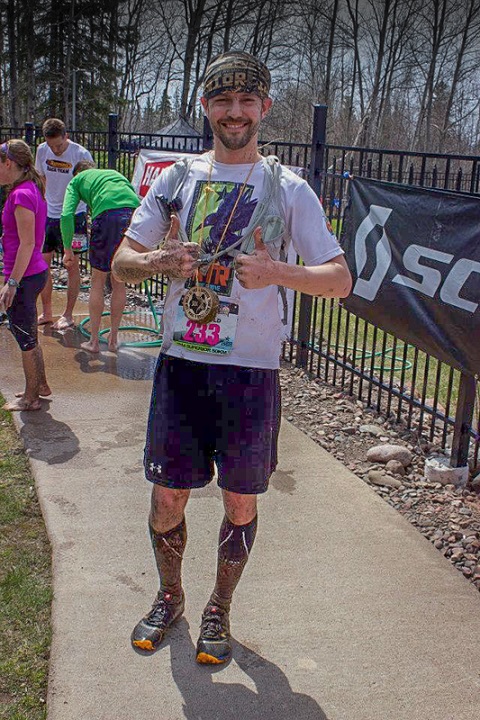 Happy, Muddy, Finished.
Happy, Muddy, Finished.
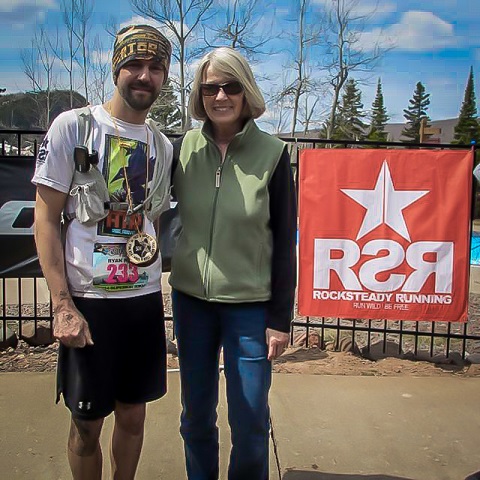 Mom and me.
Mom and me.
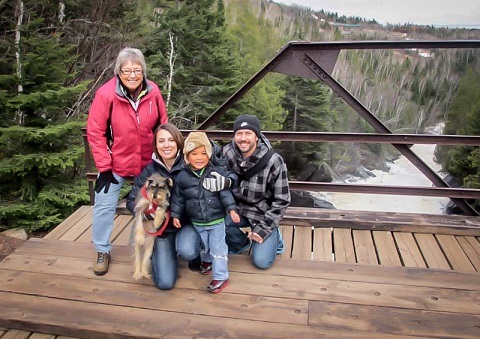 My family and Aunt over the raging Poplar River.
My family and Aunt over the raging Poplar River.
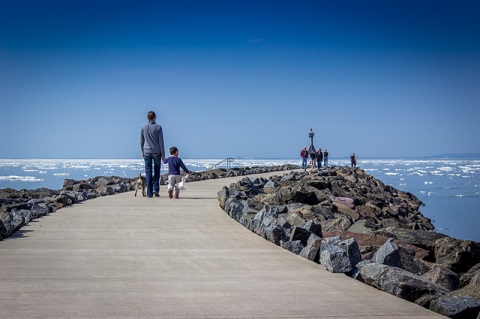 Lake Superior looking Icy.
Lake Superior looking Icy.
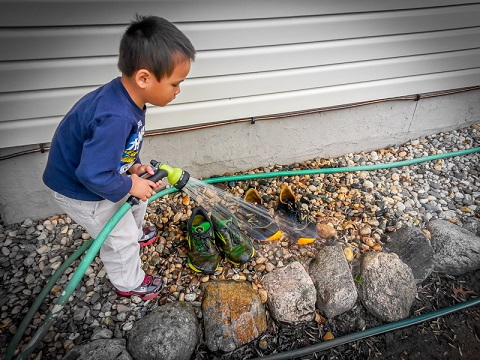 Best crew dude ever!
Best crew dude ever!

Hey Ryan, It’s great to hear your thoughts and feedback on how to run. I can’t run again yet because I have two brain tumors now, but I look forward to the day I can because I get such a runner’s high that I haven’t found in any other sport! Thanks for writing this. It is an inspiration 🙂 Amy
You killed great race!
Better performance through science. I love it!
Ryan, this is by far one of the best detail, honest yet short, inspiring and ‘educational’ trail report I have read!! Love the photos especially the “best crew dude ever!” He’s adorable!! Thanks for the smile and reminder of the euphoria and bliss we seek with running in nature and like-minded trail runners!! CONGRATS on an awesome race and finish!! I hope to run in 2015!!
Thanks JC! Are you planning to run the Spring Superior? It is so much fun! Prepare mentally for lots of mud!!!